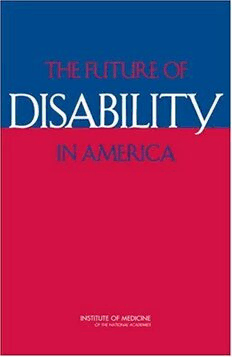
The Future of Disability in America PDF
619 Pages·2007·2.425 MB·English
Most books are stored in the elastic cloud where traffic is expensive. For this reason, we have a limit on daily download.
Preview The Future of Disability in America
Description:
The future of disability in America will depend on how well the U.S. prepares for and manages the demographic, fiscal, and technological developments that will unfold during the next two to three decades. Building upon two prior studies from the Institute of Medicine (the 1991 Institute of Medicine's report Disability in America and the 1997 report Enabling America), "The Future of Disability in America" examines both progress and concerns about continuing barriers that limit the independence, productivity, and participation in community life of people with disabilities.This book offers a comprehensive look at a wide range of issues, including the prevalence of disability across the lifespan; disability trends the role of assistive technology; barriers posed by health care and other facilities with inaccessible buildings, equipment, and information formats; the needs of young people moving from pediatric to adult health care and of adults experiencing premature aging and secondary health problems; selected issues in health care financing (e.g., risk adjusting payments to health plans, coverage of assistive technology); and the organizing and financing of disability-related research. "The Future of Disability in America" is an assessment of both principles and scientific evidence for disability policies and services. This book's recommendations propose steps to eliminate barriers and strengthen the evidence base for future public and private actions to reduce the impact of disability on individuals, families, and society.
See more
The list of books you might like
Most books are stored in the elastic cloud where traffic is expensive. For this reason, we have a limit on daily download.
